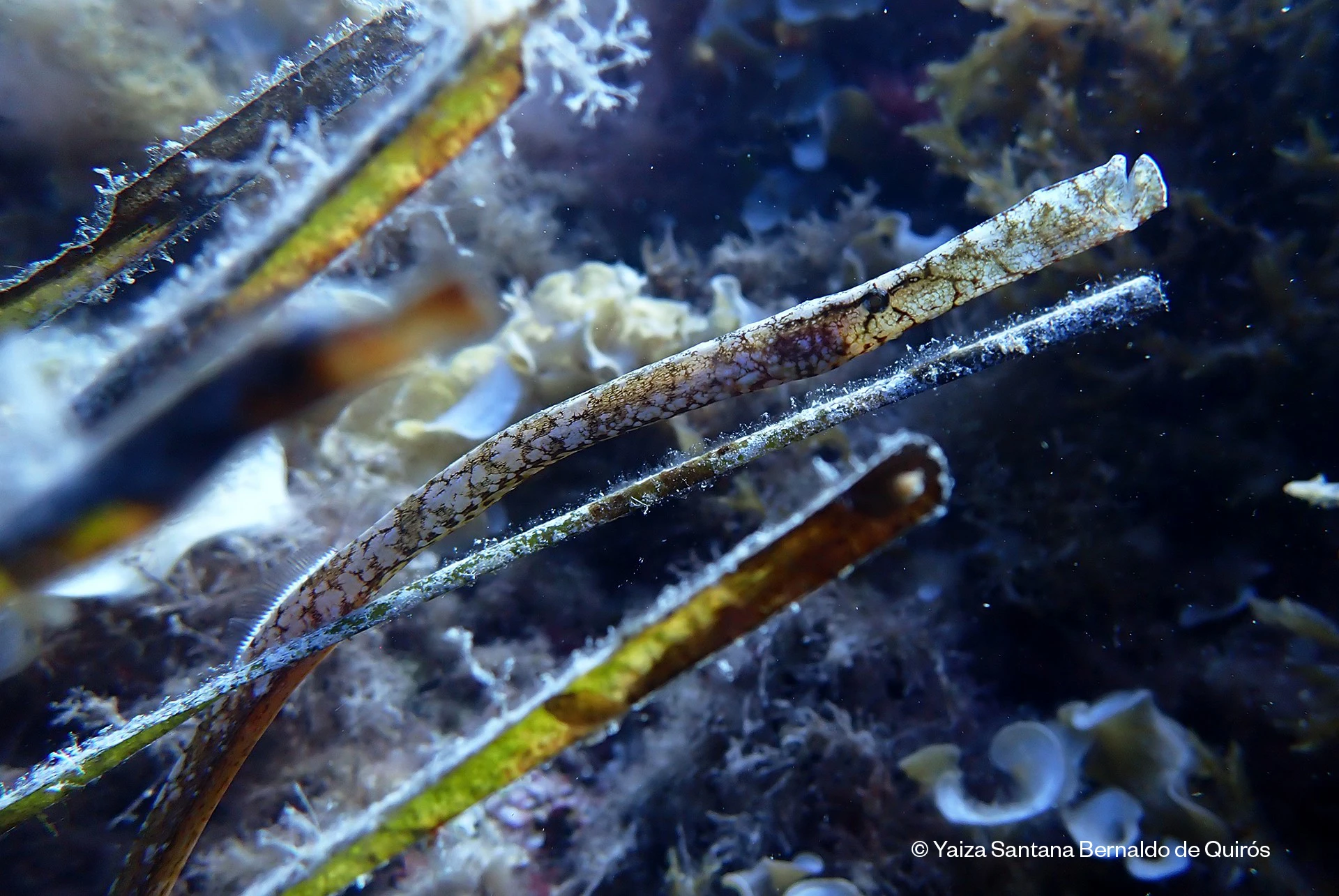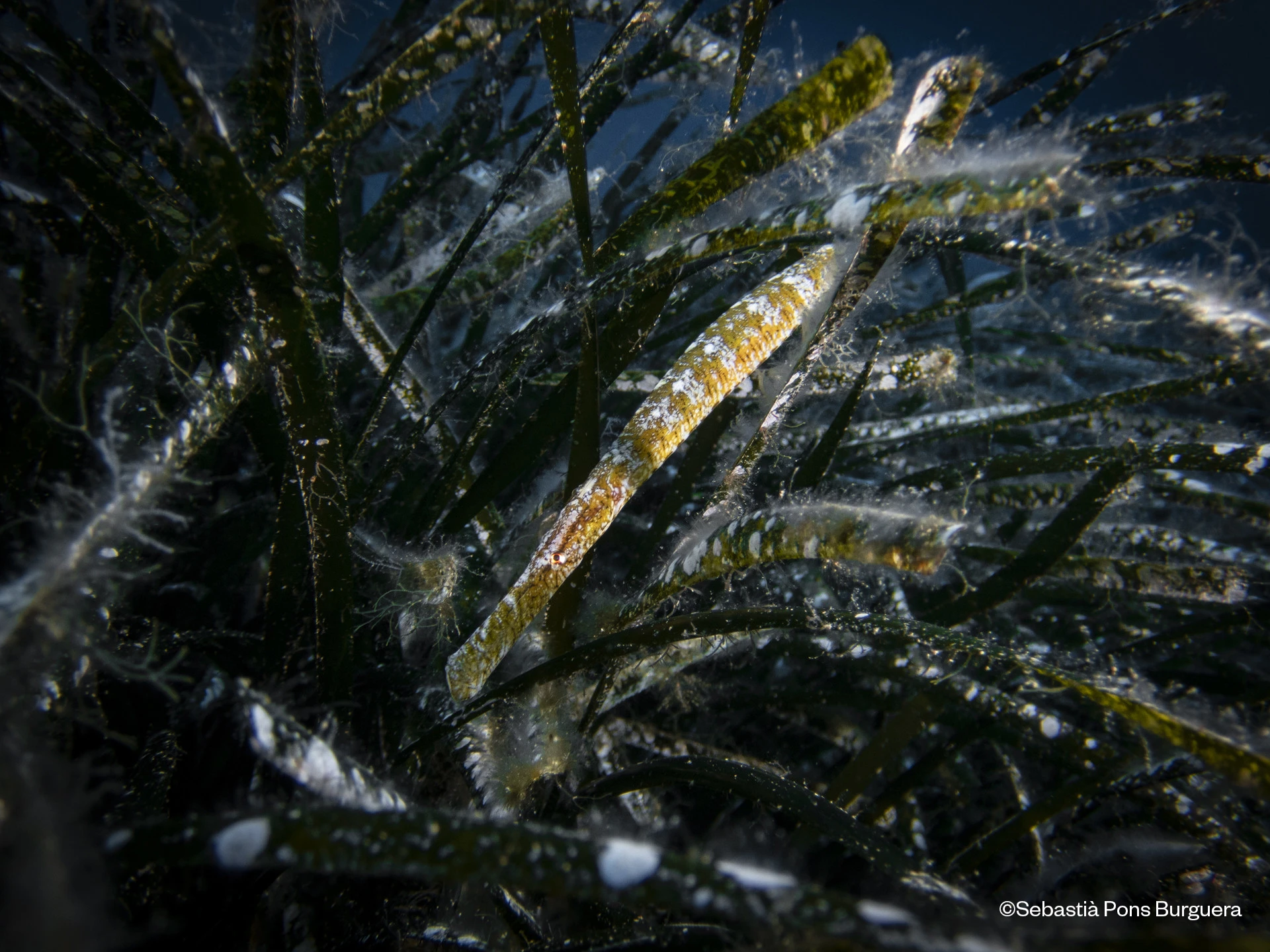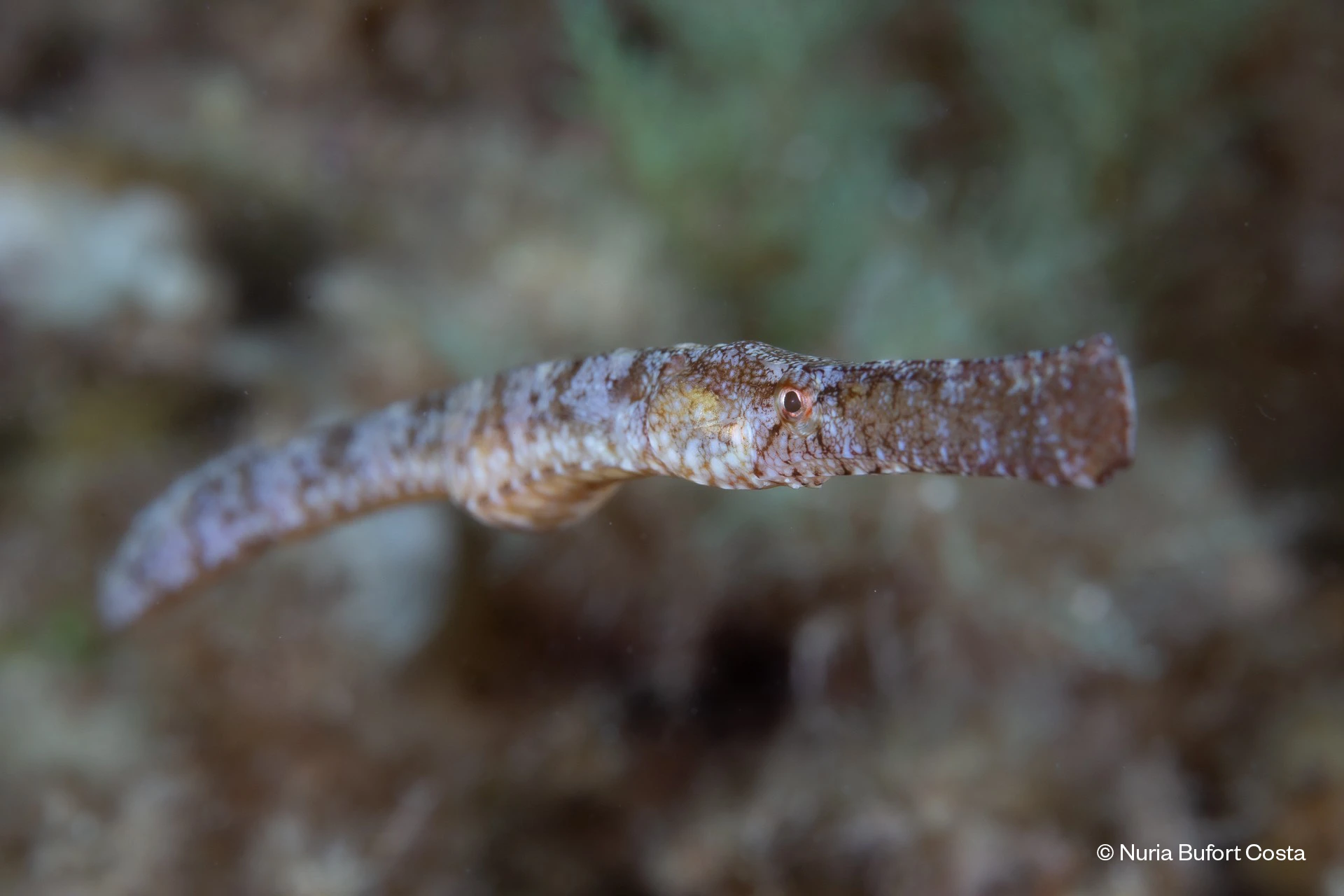-
Who we are?
Who we are?
-
Projects
-
Recovery centre
Recovery centre
- Collaborate
- News
Pipefish are extraordinary and little-known creatures. They belong to the same family as seahorses and sea dragons; in other words, they are close relatives. They are also known as needlefish.
They can be found around the world, except at the poles, and are especially common in tropical and subtropical coastal waters.
It is the male that fertilises and incubates the eggs. Depending on the species of pipefish, some males carry the eggs in a pouch near the abdomen, while others carry them on their tail and/or trunk. There are several types of protection and incubation methods, which again vary according to the species.


Pipefish have few natural predators, due to two main reasons: their ability to blend into their surroundings, and their elongated bodies, which are made up of bony plates rather than scales, making them an unappetising choice for other fish. These bony plates also provide physical resilience and rigidity. Yet despite this, it’s estimated that only 1% of each brood survives.
Five species of pipefish are included on the Balearic Islands’ Red List of Fish, including two that are regionally extinct, two almost endangered species and one which is listed as vulnerable.
The Pipefish Conservation Project focuses on recovering pipefish caught accidentally and placing them in a controlled, artificial breeding environment.
The young will be raised in facilities at Palma Aquarium until they reach an optimal size and juvenile maturity, at which point they will be released into their natural habitat to help boost existing populations.

 Collaborate
Collaborate